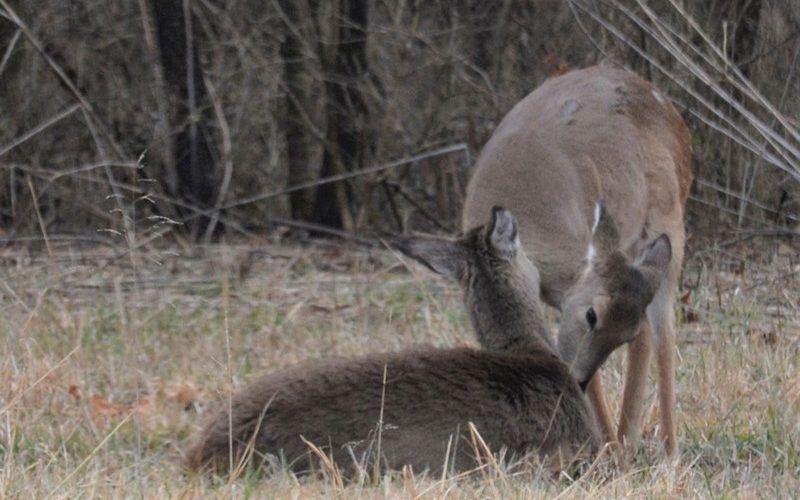Maslow’s Hierarchy of Needs has nothing on the hierarchy of deer. While they may appear to herd together like brainless sheep, their movements and behaviors are intentional, based on a complex social system. There are dominant and submissive deer, fights (not just between males during the rut) and close bonds between individuals.
A deer’s position in the hierarchy determines what territory and resources they can access, along with their responsibilities to the herd. There are dominant does as well as bucks, and both communicate danger or status. Obviously, dominant bucks will fight other males to win the right to mate with any available females. But does will engage in small battles, too.
A dominant doe is typically the eldest and most experienced. She leads her group of females, fawns and yearlings. She must be the most vigilant to danger, and once she spots it, she stamps her hoof on the ground to warn the herd. The vibrations can be felt for a long distance and the sound heard within a smaller range. If scattered, the herd members can follow her scent to the safer place she has located and reunite. Members try not to look her in the eye and also avoid physical contact.
Avoiding contact is especially important if you don’t want to get “hoofed.” This is when the dominant doe raises her front hoof and strikes another deer on the back or neck. Even fawns are taught who’s boss. A tail half-lifted or ears halfway down signifies dominance but is a minor threat. When a deer lays back their ears, lowers their head and makes their hair stand on end, this is a major threat and may indicate a deer about to charge another. When does do this and move forward, it looks like she is somewhat submissive or vacuuming the ground with her nose! But the fleeing of other deer indicates that clearly, she is the leader.
Of course, the white-tailed deer gets its name from its fluffy white tail, which it raises like a flag while running and leaping from a predator. This may alert other deer to danger and help them stick together in brush. A tail pressed down is used to escape undetected from a distant threat. A swishing tail gives others the “all clear” and invites them to feed. When deer are relaxed, they bed down (fun to watch!) and the dominant member will initiate grooming subordinate members. Deer maintain bonds in many ways, including grooming one another’s head and shoulders.
Body language is a big deal for deer. But they also have vocalizations. Commonly, we hear them “sneeze” or blow air in a quick, high-pitched call like someone imitating an elephant. A loud A-choo! in the distance makes you want to say gesundheit, but this is a warning call. Fawns, like lambs, bleat to their mothers, usually when hungry or searching for her. Does often grunt to their fawns to keep them from getting lost. Bucks may also grunt, but usually this is in pursuit of a mate and is a warning to other interested males.
Understanding our interdependent web of life brings us closer to nature and, subsequently, closer to respecting it. Deer can be fun to watch and may even help us learn about ourselves. Seeing one doe hoof another doe may remind us to be more compassionate and less like deer. Observing two close individuals grooming each other can help us remember to show affection. The wildlife around us go about their day in many of the same places we do; remembering that we’re essentially living in each other’s homes can highlight our mutual need for this natural state called Arkansas.
Amanda Bancroft is a writer, artist, and naturalist living in an off-grid tiny house on Kessler Mountain. She and her husband Ryan blog about their adventures and offer tips to those wanting to make a difference at www.RipplesBlog.org.










